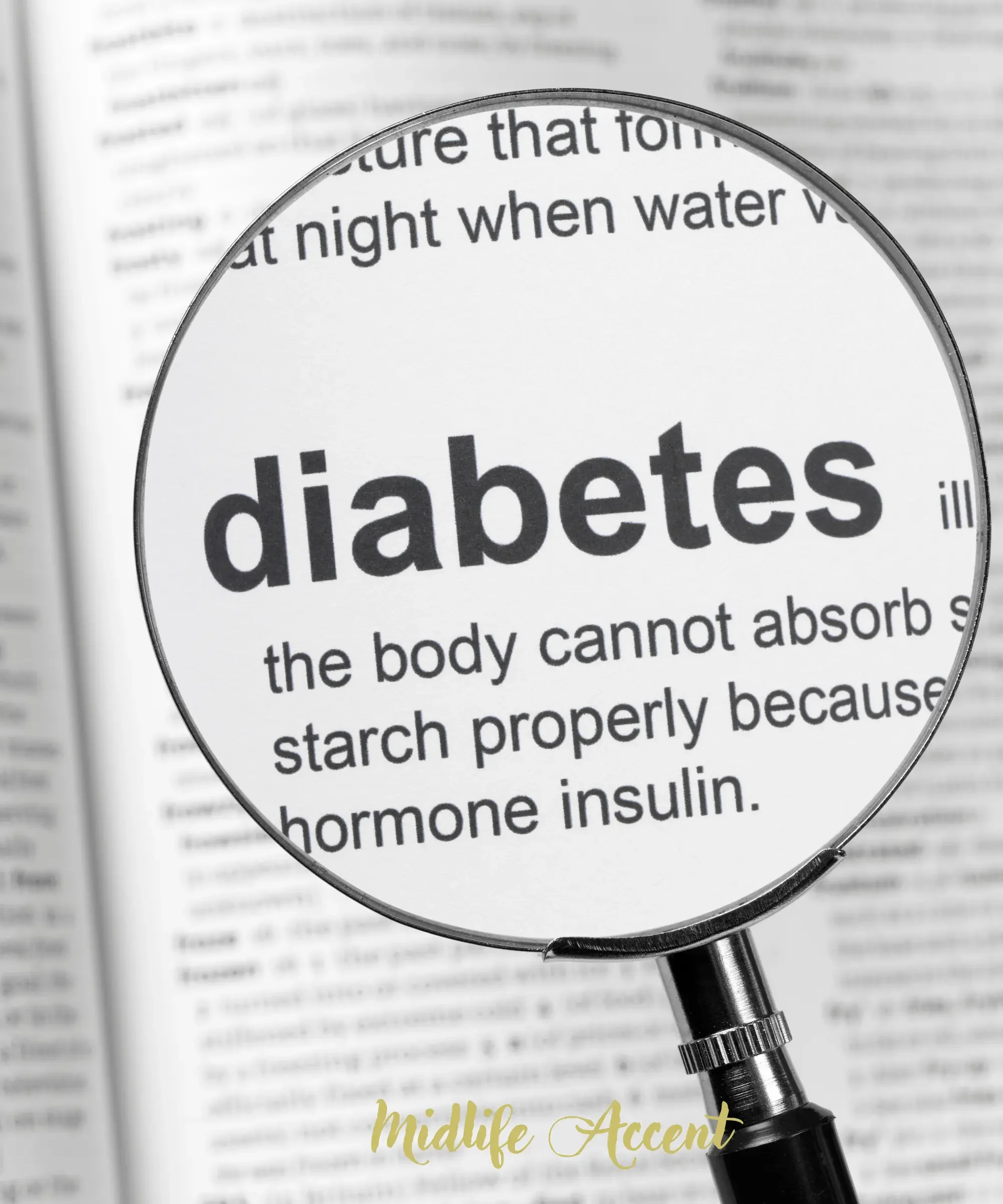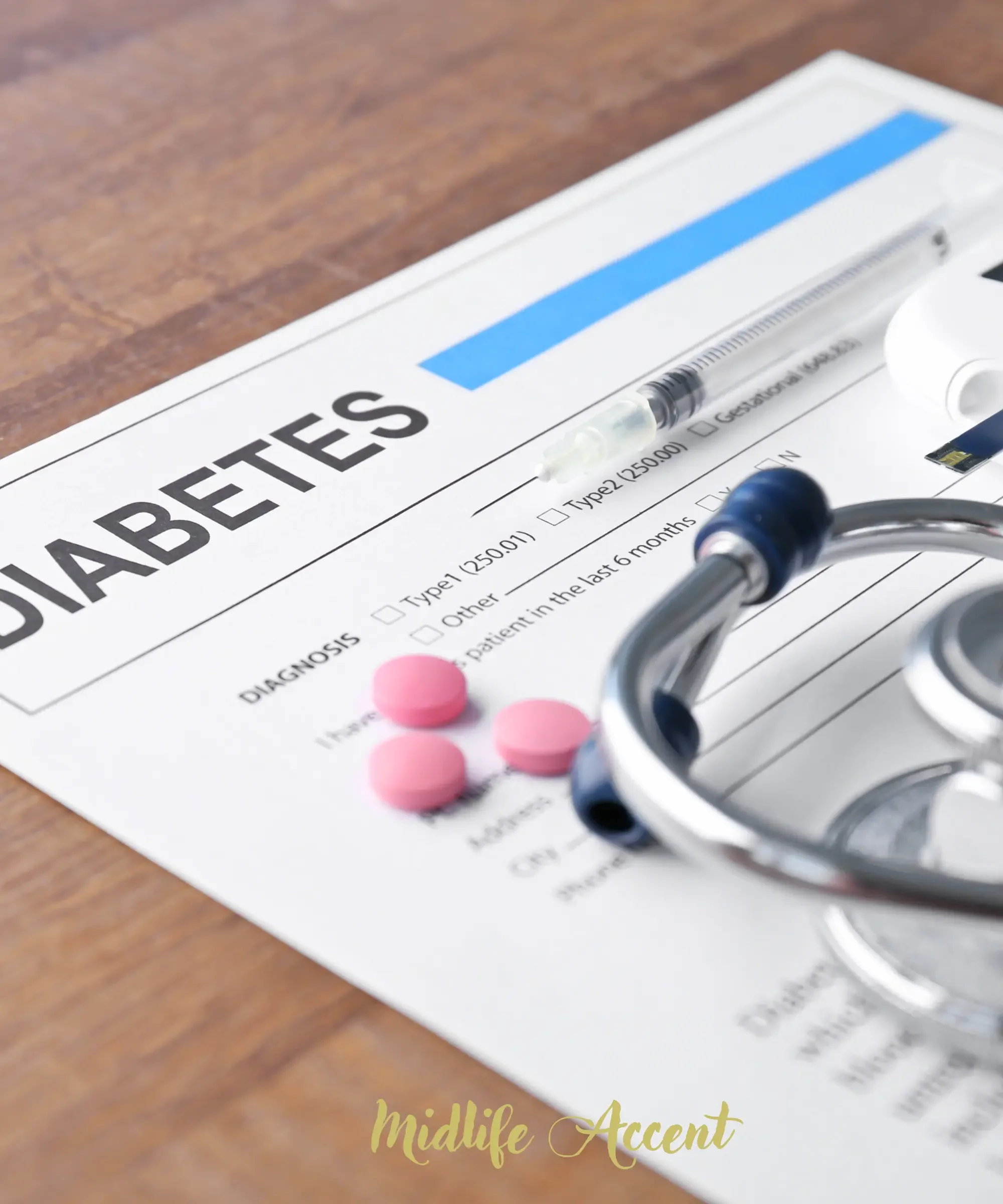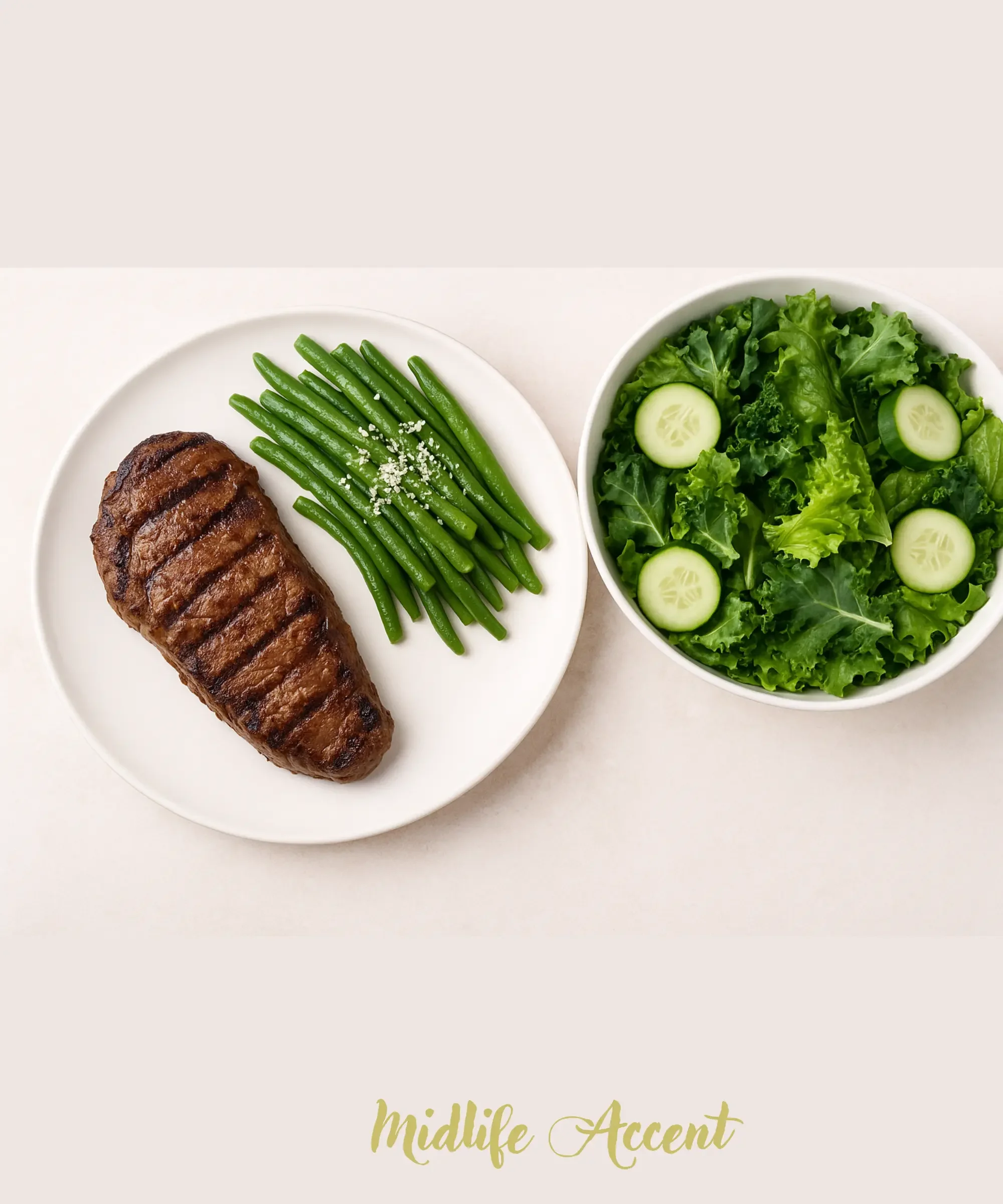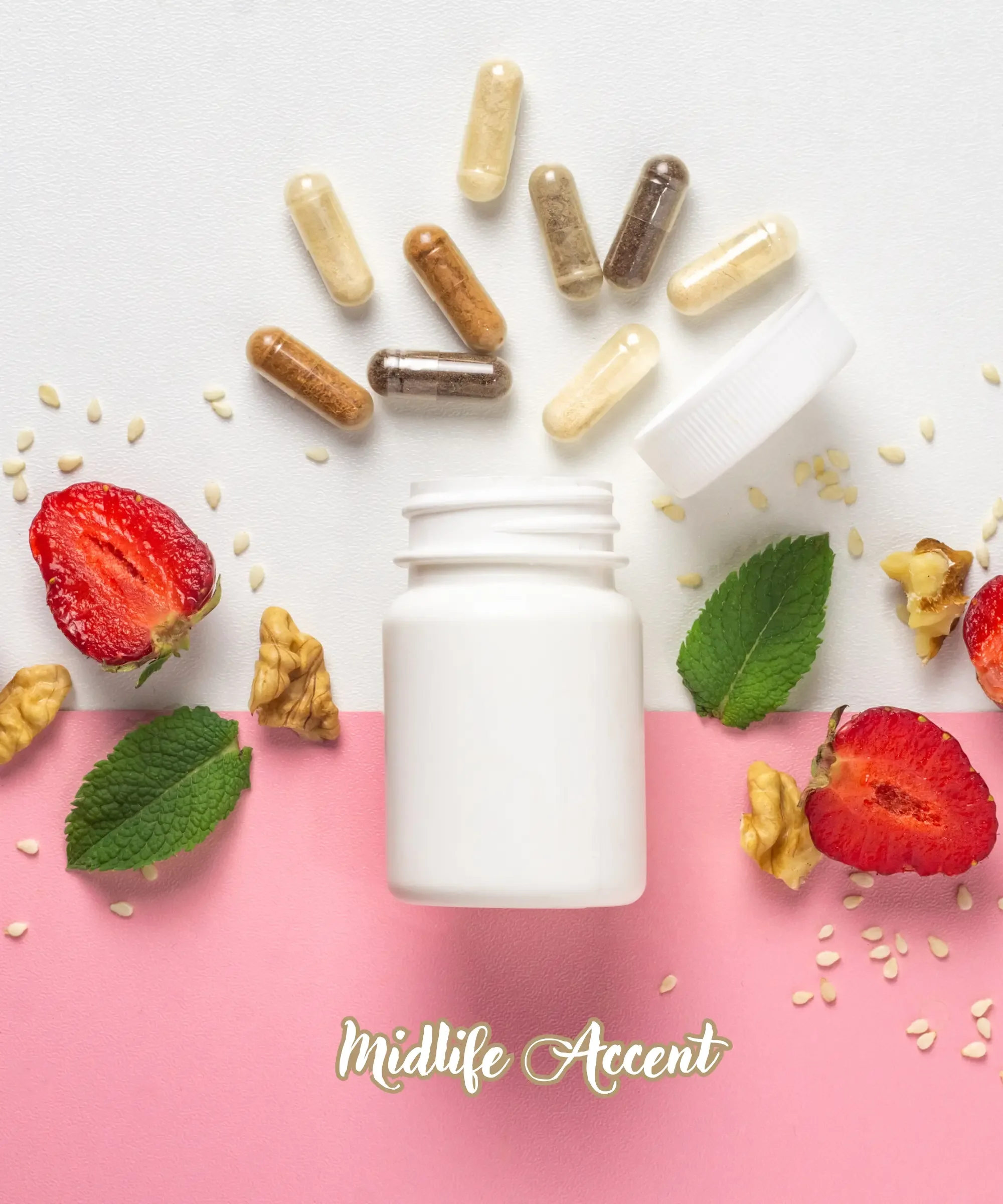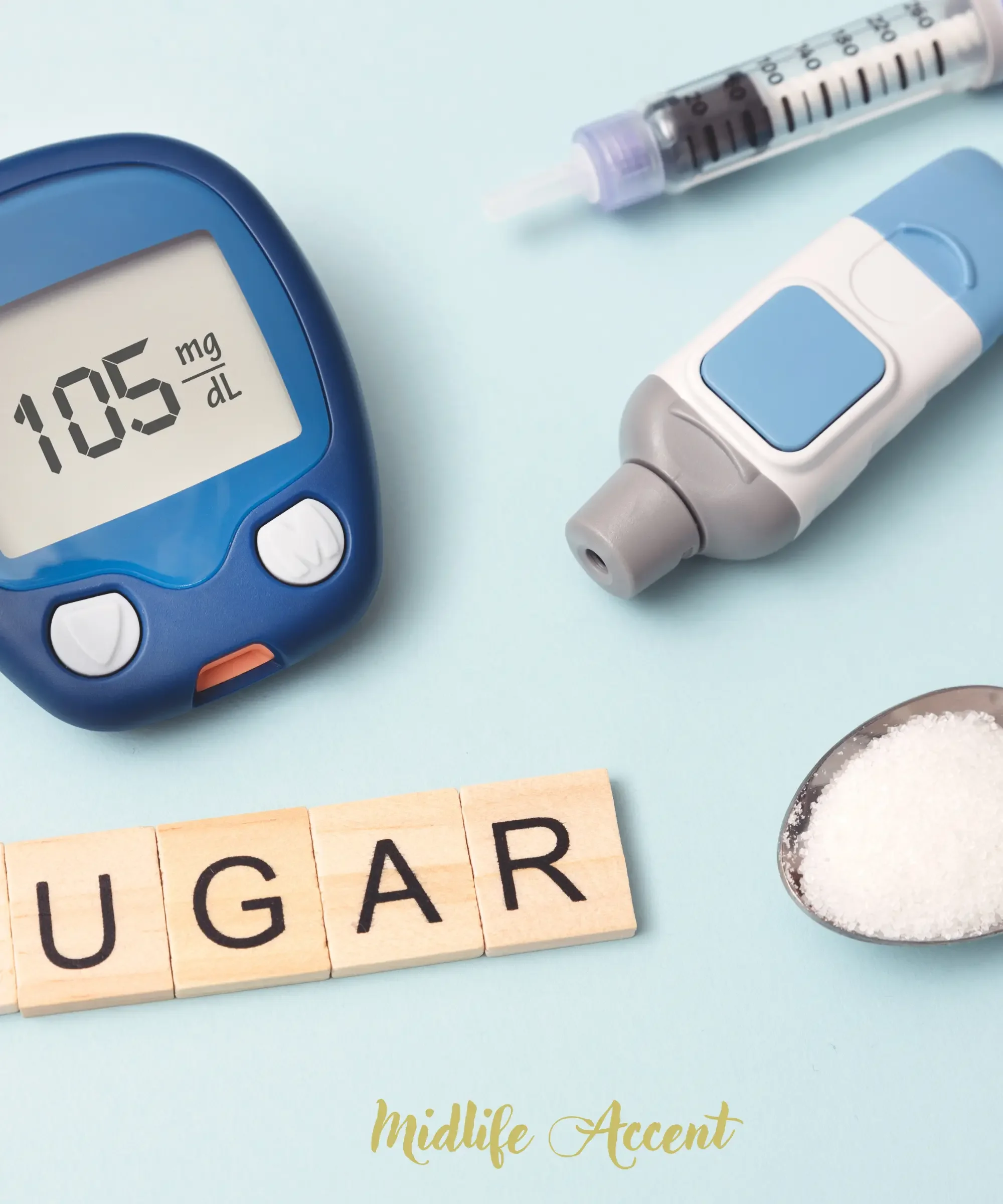“How to Reverse Type 2 Diabetes Naturally no Medication”
If you’ve just heard the words “type 2 diabetes” from a doctor’s lips, you know the mix of fear and questions that follow. What now? What do I eat? How do I even start?
We were there too. And what happened next changed everything.
There are powerful steps you can take every single day to lower blood sugar naturally. Since we left the hospital, these habits have been our backbone: meal timing, stress reduction that positively affects blood sugar swings, the right supplements, and daily movement that doesn’t require a gym membership.
And the result? Progress toward remission, without a single pill.
Scary Wake-Up Call
Two weeks ago, our lives were turned upside down by one of the scariest health emergencies we’ve ever faced—a night that started out ordinary but ended up changing our lives.
Looking back, the warning signs had been there for years—symptoms my husband brushed off, things we both tried to ignore. But that night, everything came crashing in. He walked into the bedroom clutching his side and whispered, “We need to go to the hospital.”
At first, he thought it was appendicitis. I knew better. One look at his face and the way he held his body, and I said, “Baby, that is your gallbladder.” The truth hit hard: his body was waving a red flag we could no longer ignore.
That moment—terrifying as it was—became the turning point. It’s what pushed us to change everything: the way we ate, the way we lived, and how we began the journey of reversing type 2 diabetes naturally, without medication.
What happened next could fill a book, but you can read the full gallbladder story here: A Gallbladder, a Warning, and a Wake-Up Call.
At the hospital, the first number we saw nearly stopped us in our tracks: his blood sugar was 386. Even the nurses were stunned. I overheard one whisper, “And he’s still walking and responsive?” That’s when I realized just how dangerously high that number really was.
It took almost 24 hours of IV treatment before his blood sugar came down enough for surgery. The diagnosis? A gangrenous gallbladder—yes, gangrene—caused by a severe bacterial infection. After antibiotics and a successful removal, the hospital’s diabetes management team came in with their plan.
The educator kindly explained why my husband “needed” to start two common type 2 diabetes medications immediately. We’d seen these drugs before in his stepfather’s life, and the results were anything but hopeful: years of side effects, poor health, and a fading quality of life. I pressed for answers about risks. The reply? That the internet “overstates” them and it was “unlikely” anything serious would happen.
My husband and I exchanged a look—the kind where you don’t need words. We accepted the glucometer she generously gave us, thanked her for her time, and left with $17 worth of prescriptions that we never opened.
Instead, we chose a different path: to reverse type 2 diabetes naturally, without medication. Two weeks later, the results speak for themselves…
Blood sugar two hours after lunch: 104
Fasting blood sugar this morning: 101
Energy, mood, and overall health — improving every single day
What are we doing to achieve these numbers in just two weeks? That’s exactly what I’m going to share here — step-by-step, so you can see what’s possible and decide your approach to managing or even reversing diabetes naturally.
Disclaimer: I’m not a doctor. This is our personal experience and not medical advice.
Why We Chose a Natural Approach to Reverse Type 2 Diabetes
We’re not against medication when it’s truly necessary — but for us, the potential side effects and our personal family history made us want to try lifestyle first. We also knew that early intervention is when lifestyle changes can make the biggest difference.
How Long Does It Take to Reverse Type 2 Diabetes Naturally?
The time it takes to get type 2 diabetes into remission can vary a lot from person to person, depending on factors like:
How long you’ve had diabetes (newer diagnoses tend to respond faster).
Your initial blood sugar levels and A1C.
How aggressively you change diet, activity, and weight.
Your body’s insulin sensitivity and pancreatic function.
Typical timelines seen in research and clinical practice:
Rapid responders – Some people, especially those recently diagnosed, can see normal blood sugars within weeks after making significant dietary changes (e.g., low-carb or very low-calorie diets) combined with daily movement.
Moderate responders – For many, 3 to 6 months of consistent weight loss (often 10–15% of body weight) and improved lifestyle can bring A1C back into the non-diabetic range.
Longer-term responders – For those who’ve had diabetes for years, it may take 6–12 months or more to see sustained remission, and some may still require medications but at lower doses.
What Does Remission Mean for Type 2 Diabetes?
A1C below 6.5% for at least 3 months without diabetes medications (Metformin sometimes excluded).
Fasting glucose consistently below 126 mg/dL.
The Exact Steps We Took to Reverse Type 2 Diabetes Naturally
Step 1 – Stabilizing Blood Sugar with Food
We focused on low-carb, nutrient-dense meals:
Non-starchy vegetables
Enough quality proteins like eggs, chicken, fish.
Healthy fats from avocado, olive oil, nuts
No refined sugar, white flour, or sugary drinks
Six cups of greens per day. 3 cups of greens with each meal. Greens mean organic kale, Organic green mix, cucumbers, carrots, onions, and peppers.
Homemade dressing with L. reuteri yogurt. If you want to know how to make it and why you should include it in your diet, read my post here.
We also embraced satisfying, comforting recipes that fit into our plan. If you need inspiration, see 5 Low-Carb Comfort Meals.
Best Meal Timing for Type 2 Diabetes
If you’ve ever felt stuck in a cycle of constant snacking, you’re not alone. We were there too. But once we stopped grazing and committed to a steady meal timing routine for type 2 diabetes, everything changed. His body finally had time to rest between meals, and those unpredictable blood sugar spikes started to level out, read The Cortisol-Insulin Connection.
One of the biggest shifts we made was meal timing for type 2 diabetes: his first meal is at 11:30 AM, followed by a gentle 30-minute walk to aid digestion and keep blood sugar steady. Dinner happens around 5:00 PM, with no snacks in between. If he does want something extra, we simply add it to the meal—never on its own—to avoid blood sugar spikes.
Every plate is built around balance:
🥩 Protein (about 8 ounces)
🥦 Cooked veggies
🥗 Three cups of fresh salad
🌰 A handful of macadamia nuts
🍰 A low-carb, sugar-free dessert
The result? He feels satisfied and full, with no hunger until the next meal—proof that low-carb meals for diabetes can be both filling and enjoyable.
Step 2 – Improve Gut Health to Support Blood Sugar Control
Your gut isn’t just about digestion—it’s directly connected to metabolic health and type 2 diabetes management. A healthy gut can reduce inflammation, improve insulin sensitivity, and make blood sugar easier to manage.
One simple (and surprisingly delicious) change we made was adding L. reuteri yogurt, a powerful probiotic. We use it in both our desserts and homemade salad dressings, so it slips naturally into our meals while quietly supporting his blood sugar balance.
For the deeper science behind the gut–brain link, read The Gut-Brain Stress Connection.
Step 3 – Best Exercise for Type 2 Diabetes (Without Overdoing It)
If you’ve ever felt wiped out after a workout instead of energized, cortisol might be the reason. Gentle movement is one of the best ways to lower blood sugar naturally—it keeps glucose steady without spiking your stress hormone. That’s why a simple walk for 20 minutes after meals has been such a game-changer for us.
The surprising truth? High-intensity workouts can sometimes backfire, especially if your cortisol is already running high. Instead of helping, they can stall progress and make blood sugar harder to manage.
Curious if stress could be holding you back? I dive deeper into this in Why Cortisol Is Blocking Your Weight Loss—it’s an eye-opener if you’ve ever felt like you’re “doing everything right” but not seeing results.
Step 4 – How Stress Raises Blood Sugar (and What to Do About It)
If you’ve ever noticed your blood sugar creep up on stressful days—even when you’ve eaten perfectly—you’re not imagining it. Chronic stress can raise blood sugar as much as a bad meal. That’s why we built small, daily rituals to calm cortisol and protect his numbers:
🌙 Breathing exercises before bed
📵 No late-night screen time
🛏️ A consistent sleep schedule that signals “rest” to the body
These shifts may look simple, but they’ve been powerful. Peace has become just as important in our plan as food or movement.
Chronic stress can raise blood sugar as much as bad food can. See How to Lower Cortisol Naturally for more strategies.
Step 5 - Best Supplements for Type 2 Diabetes Support”
If you’ve ever wondered which supplements can actually support type 2 diabetes, here’s what worked for us. Alongside diet, movement, and stress management, we added a few targeted nutrients to help balance blood sugar naturally.
One of the most powerful has been *Berberine, which he takes once a day. Research shows it can improve insulin sensitivity, reduce inflammation, and support overall metabolic health. We’ve paired it with a few other supplements chosen specifically for blood sugar balance and long-term healing.
If you’d like to see the full list of supplements for type 2 diabetes, how each one works, and how to choose quality brands, I’ve shared everything in this post The 7 Best Supplements to Help Reverse Type 2 Diabetes Naturally (And How to Choose Quality).
*This link is an affiliate link, which means I may earn a small commission if you make a purchase — at no extra cost to you. I only share products I personally use and love. 💛
Step 6 – Tracking Blood Sugar to Reverse Type 2 Diabetes
One of the most powerful tools we’ve used is simply the glucometer. Tracking blood sugar daily gave us instant feedback on how his body reacted to food—and it can do the same for you.
Here’s the rhythm that works for us:
📊 Fasting test at 9:00 AM
🍽️ Two hours after his first meal
🍴 Two hours after dinner
With those three touchpoints, I can see exactly how each meal affects him. If something doesn’t work, we adjust quickly. No guesswork, no endless frustration—just clear data that keeps us moving forward.
And yes, there have been a few surprises (including one low-carb meal that turned into a blood sugar disaster—you can read that story here. But celebrating the small wins—like steady numbers after a favorite dinner has been the key to keeping motivation high.
How We Lowered Blood Sugar in Just 2 Weeks—Naturally
From 386 at the hospital to 101 fasting today—all without medication. His energy is up, his mood is lighter, and for the first time in years, he feels in control of his health.
This is what gives me hope: reversing type 2 diabetes naturally isn’t just about cutting carbs or walking more. It’s about that one decision—the moment you choose to fight for your health and refuse to settle. The meal plans and glucose checks come later, but the real change begins with that spark.
If you’re wondering what that moment looked like for us—and why it matters so much—I share the full story in The Hardest Part of Reversing Type 2 Diabetes Isn’t the Diet—It’s the Decision to Start — because once your heart is in it, your body will follow.
Final Thoughts
We know this is just the beginning. There are still countless low-carb meals to discover, sugar-free desserts to perfect, and daily habits to strengthen. But the most important part? He’s committed to fighting for his life — and that commitment changes everything.
This journey with type 2 diabetes isn’t the end of the story. It’s simply a new chapter—one we’re determined to fill with health, adventure, and resilience. He still has road trips to plan for us, and together we’ll keep proving that a diagnosis doesn’t define the future.
If you’re walking this road too, I want you to know: you don’t have to do it alone. Stick around for more recipes, tools, and encouragement as we continue proving that reversing diabetes naturally is possible—and worth every step.
If you’re facing your type 2 diabetes battle, know that small steps can lead to big changes — and you don’t have to do it alone. Share your story in the comments, let’s learn from each other, and check out my other posts on reversing type 2 diabetes naturally for more tips, recipes, and encouragement.
Related Posts You Might Like
Disclaimer:
I am not a doctor, medical professional, or licensed healthcare provider. The information shared in this post is based on our personal experience and research, and is intended for educational purposes only. It should not be taken as medical advice, diagnosis, or treatment. Always consult with a qualified healthcare professional before making any changes to your diet, exercise routine, supplements, or medication — especially if you have an existing health condition like diabetes. You are responsible for your own health decisions.
Affiliate Disclaimer:
Some of the links in this post are affiliate links. That means if you click through and make a purchase, I may earn a small commission — at absolutely no extra cost to you. Think of it as buying me a virtual coffee (or maybe a sugar-free dessert 🍰) for sharing helpful tips and resources. I only recommend products I personally use, truly love, or believe can make a positive difference in your life. Your support helps keep Midlife Accent running and full of fresh, free content — so thank you! 💛



